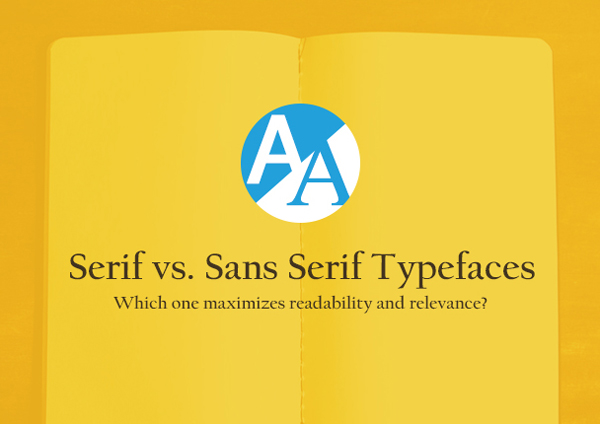
Serif and sans serif stand off against one another in the argument over readability, legibility and relevance – but the truth is that each has its time and place. Further exploring the terminology and history of serif and sans serif can help you better understand their differences, similarities and how to pair them for your projects.
When and How to Mix Serif and Sans Serif
The most commonly accepted uses in print include using serif for body text and sans serif for short bursts of copy like headings or captions. Sans can also be used for small text, because it doesn’t smear as badly. Serif is typically avoided for large signs or anything that requires large copy, because the extra emphasis is not needed with oversized text.
Mixing serif and sans serif is chaotic and tricky in some cases, but following these key guidelines can help you get a feel for using them together to create stunning copy:
- Draw the limit at two typefaces. Use either one sans and one sans serif, two serifs, or two sans. Using more than two typefaces can be distracting and draw attention from your actual text.
- Choose typefaces that complement each other. Try not to bring unnecessary attention to the typefaces – you want readers to care more about your copy. The best way to do this is to choose faces that convey the same mood, while only choosing one that tends to grab attention.
- When choosing two of the same type, make sure they contrast with one another. If you want to use a fancier typeface, use that for the headline while leaving the body copy neutral. If you use a condensed, narrow font for the headline, use something more readable for body copy.
Read the complete Serif vs Sans Serif Typefaces guide at www.Signazon.com

